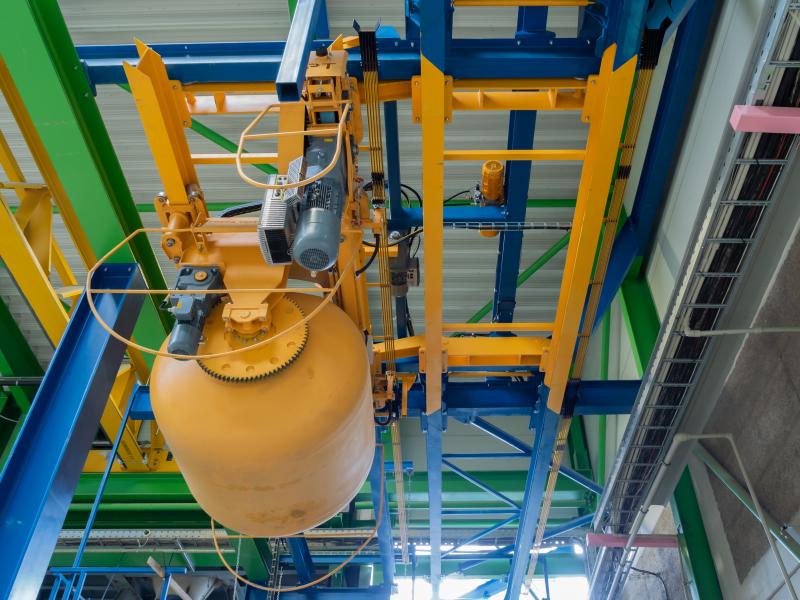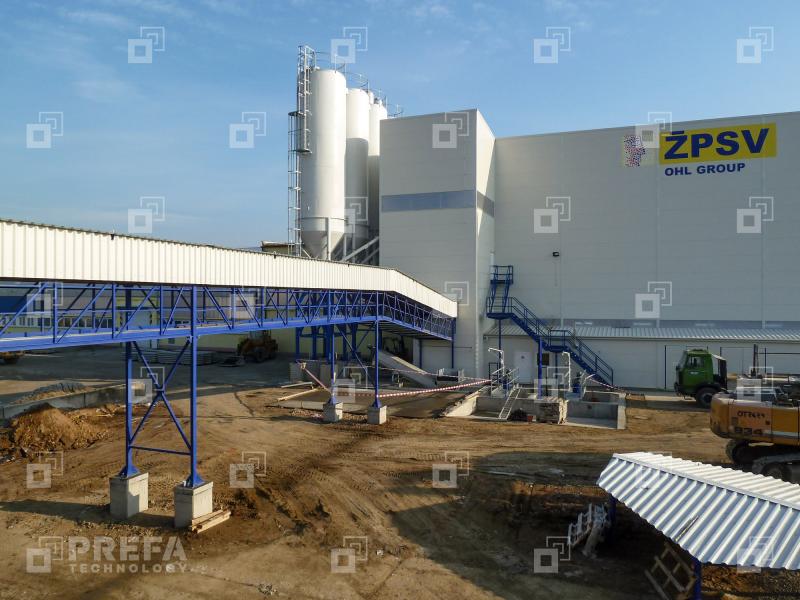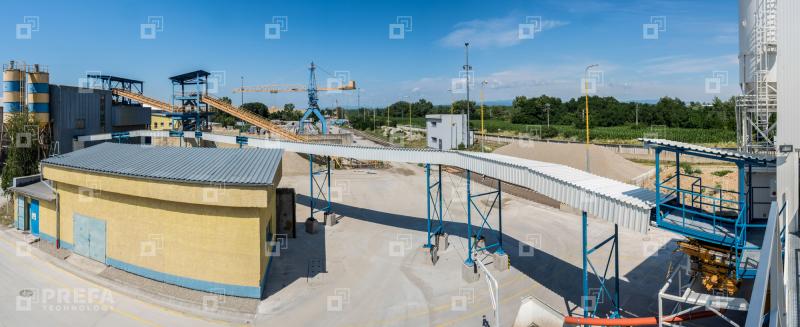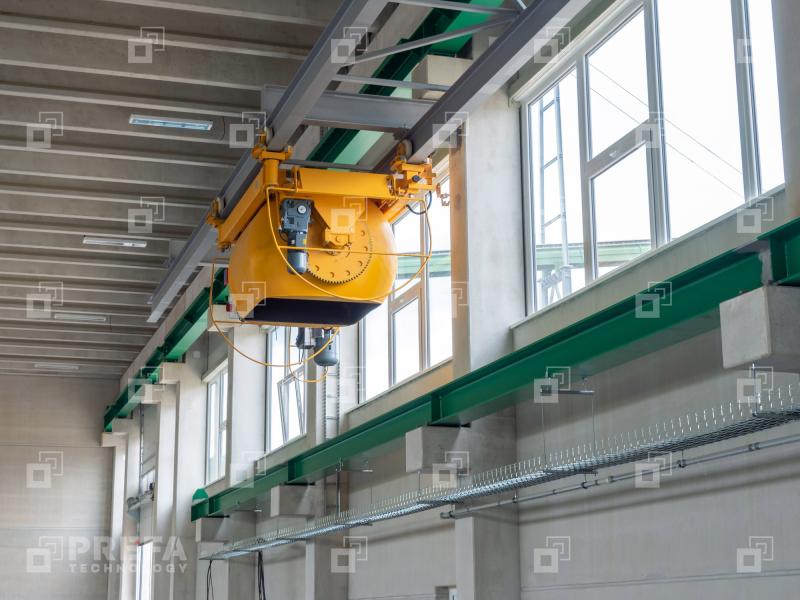Flying buckets
Flying buckets is a system used for the rapid distribution of fresh concrete that helps to utilize the maximum production capacity of precast production plants.
Flying buckets are used for the effective and safe concrete transport between the mixing centre and the post-processing site.
It can be applied in the concrete transport system where the distance between the mixing centre and the moulds for concrete is a limiting factor when producing reinforced-concrete elements.
Concrete is transported in flying buckets that travel along rails made of steel profiles.
Rail track
The rail track is placed above the production area so that the operation of the flying buckets does not interfere with the main production or compromise the safety of operators.
At service road locations, a sufficient through profile is provided to allow truck traffic.
Flying buckets allow for operation not only in straight sections, but also on gradients and curves.
The rail track needs to be placed on the load-bearing walls of the production hall or on a steel structure.
Flying buckets
Flying buckets include a steel frame with a chassis and a concrete bucket. The shuttles are driven by electric gearboxes controlled by frequency converters.
The method of discharge is selected depending on the type of consistency of the concrete being transported.
For wet (loose) concrete, containers with a segmented outlet are a suitable solution. The outlet is opened automatically using a hydraulic system.
For fluid and self-compacting concrete, cylindrical containers are used. Concrete is discharged by rotating the container around its axis by 180° or 360°. The rotation is driven by an electric gearbox.
The power supply and control of the flying buckets is ensured via collectors located on the shuttle and trolleys located on the rail track.
Flying buckets can be fully automated – see Production automation(proklik na související produkty) .
In order to operate the…
Technical specifications:
- container capacity
- 1–3.5 m3
- material transported
- wet to very fluid mixture
- container type
- segmented/cylindrical
- travel speed
- 5–180 m/min (maximum speed in a straight section)
- gradient
- normally 7°
- curve
- up to 90° – central radius 3.5 m










